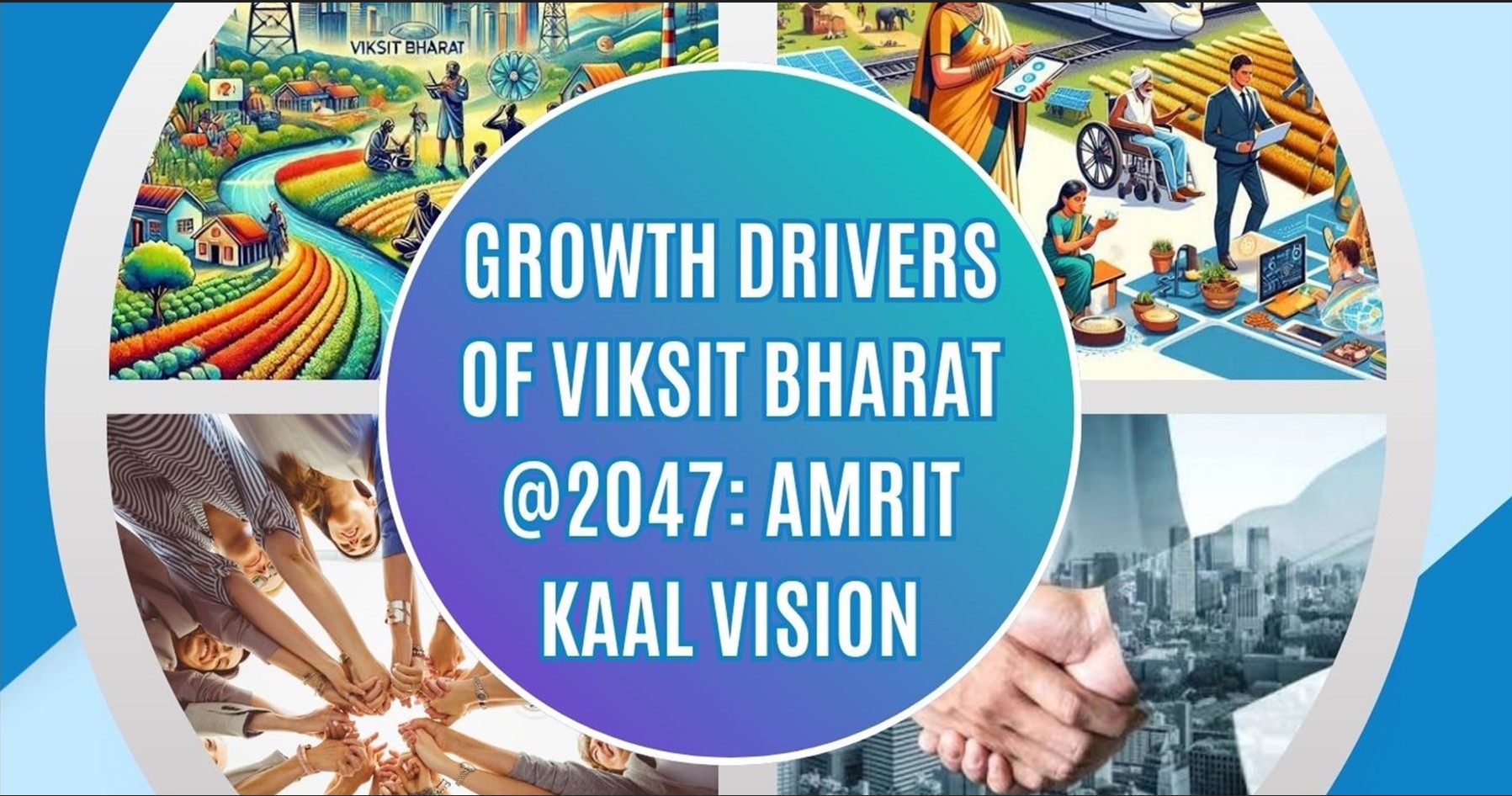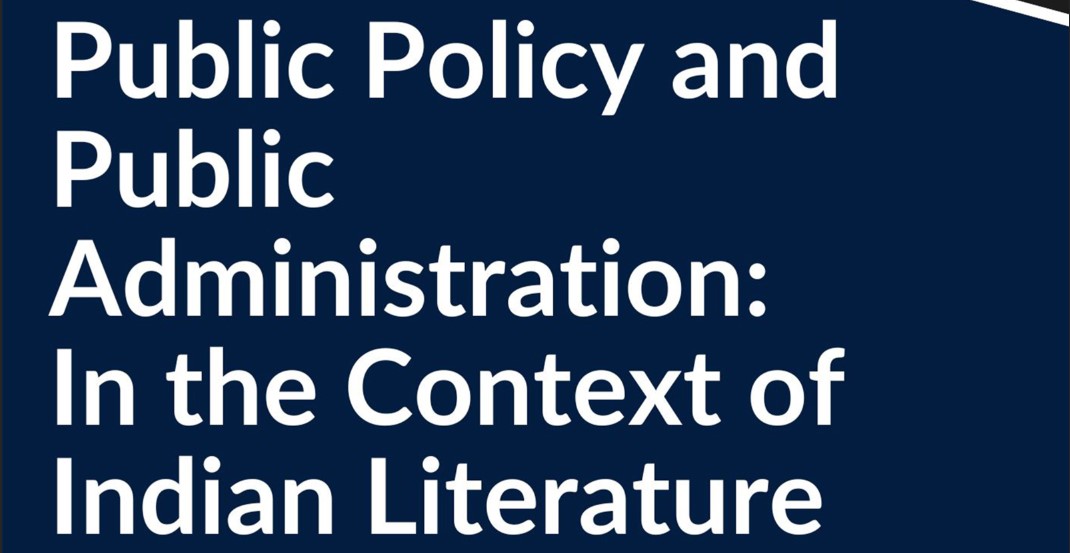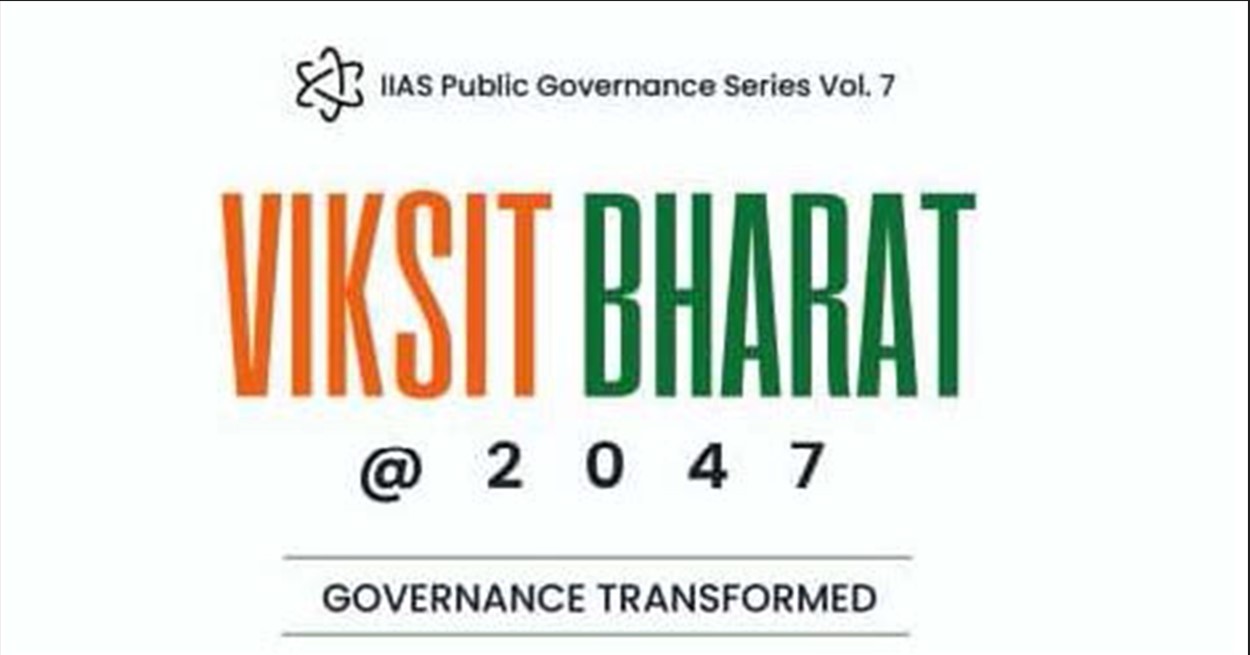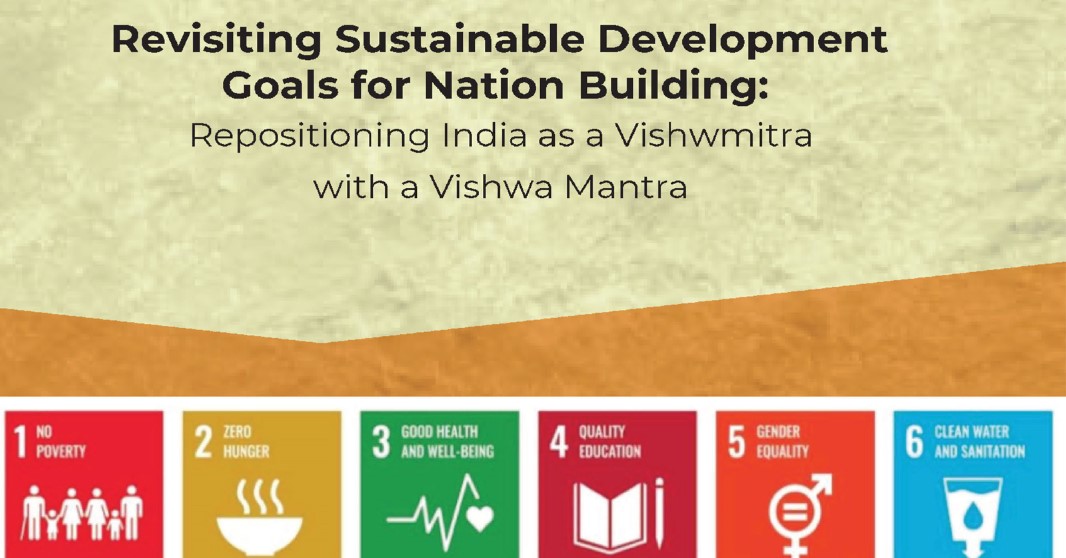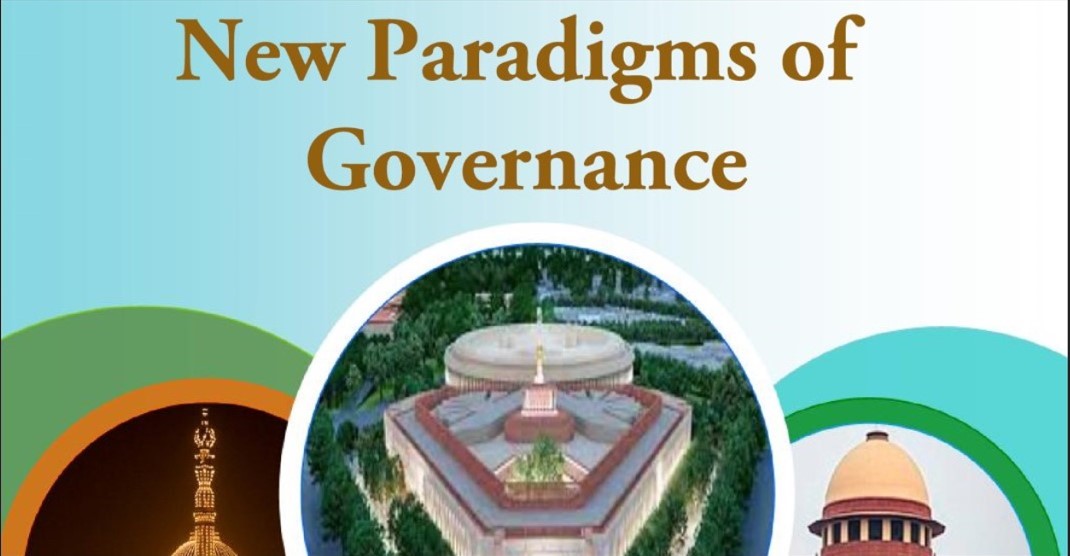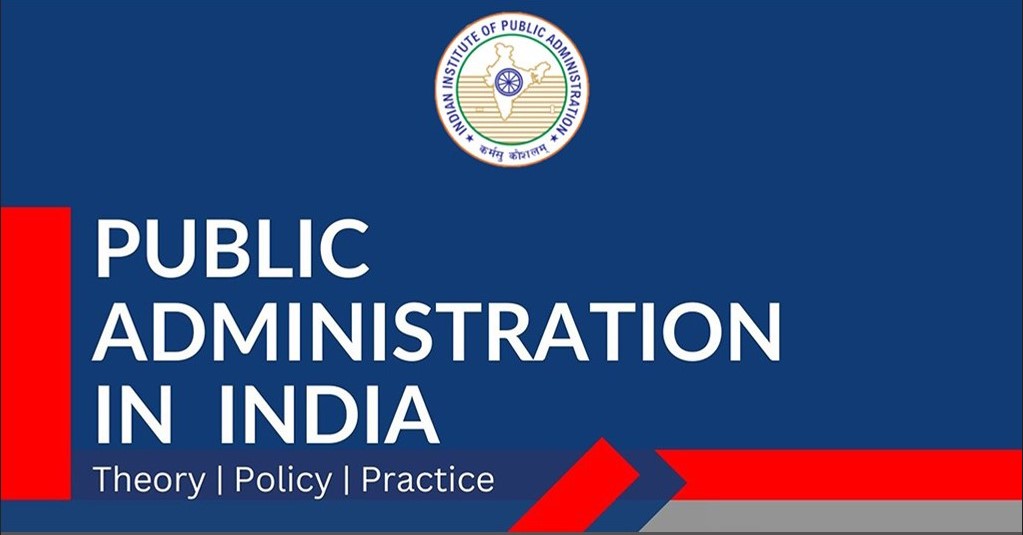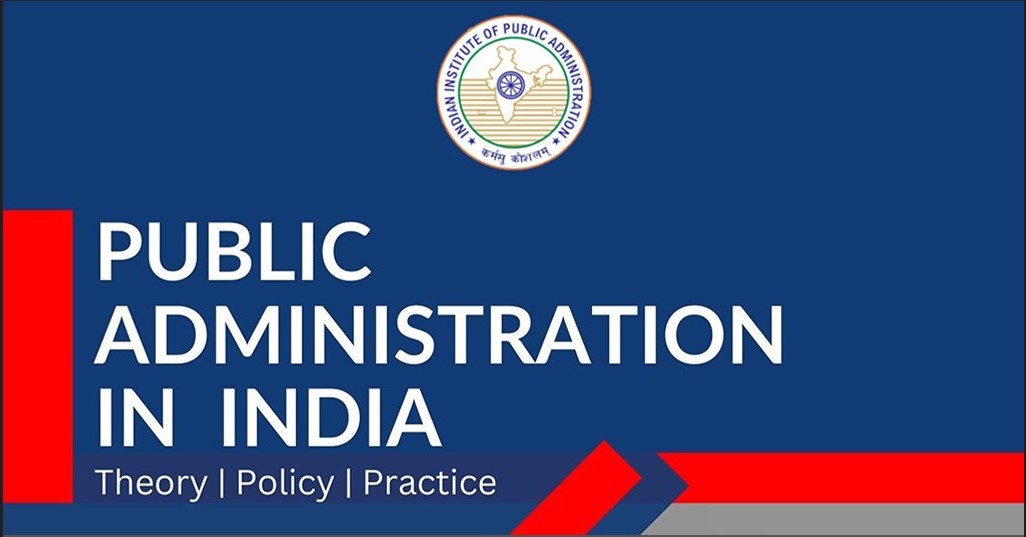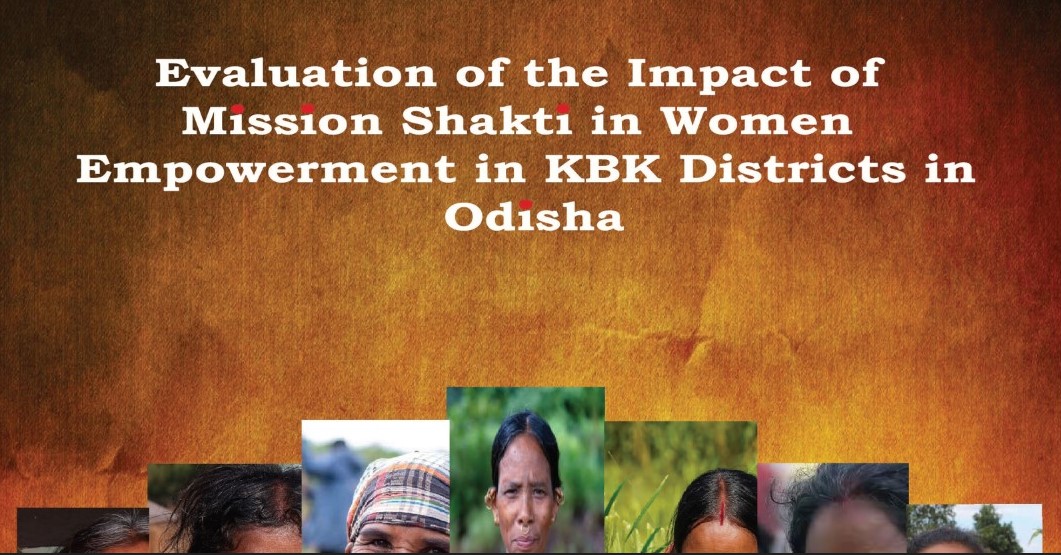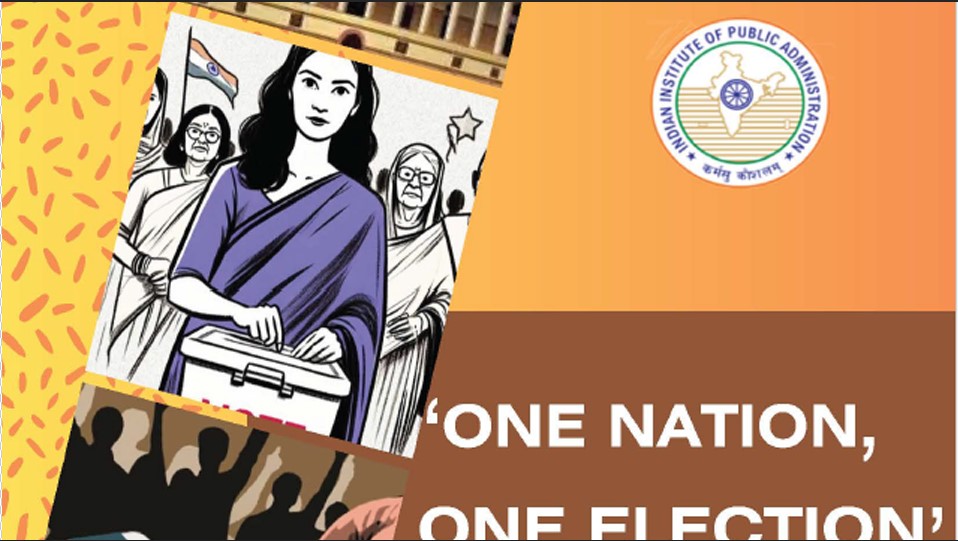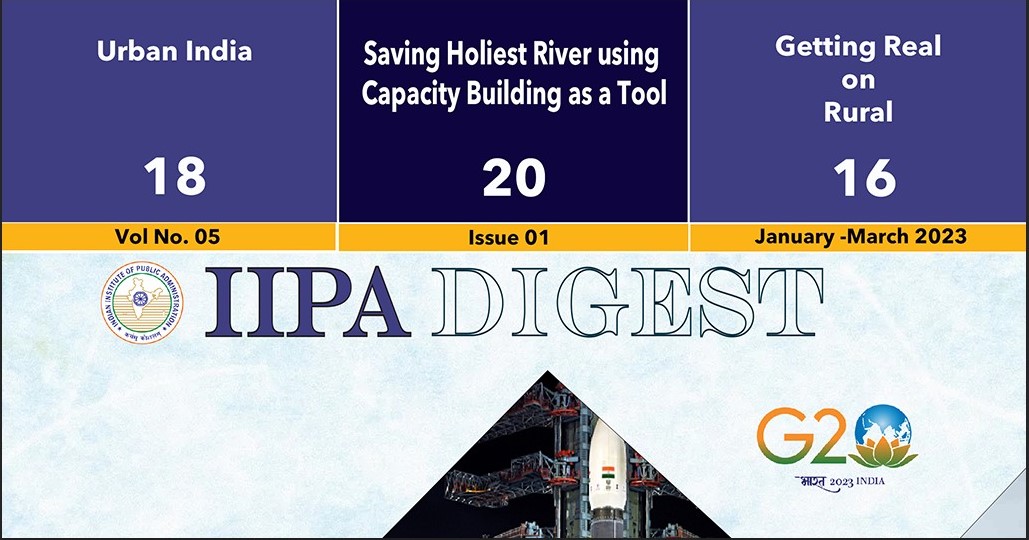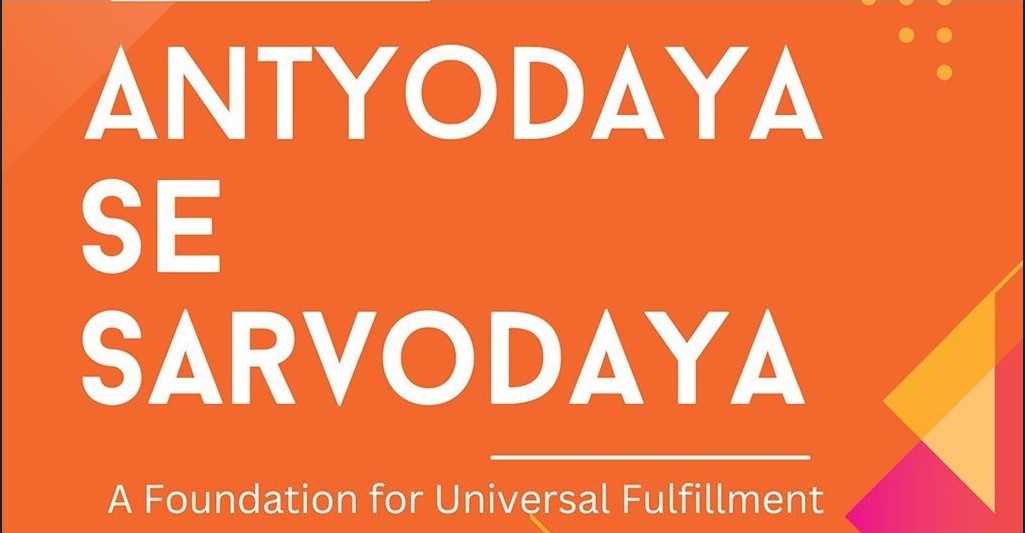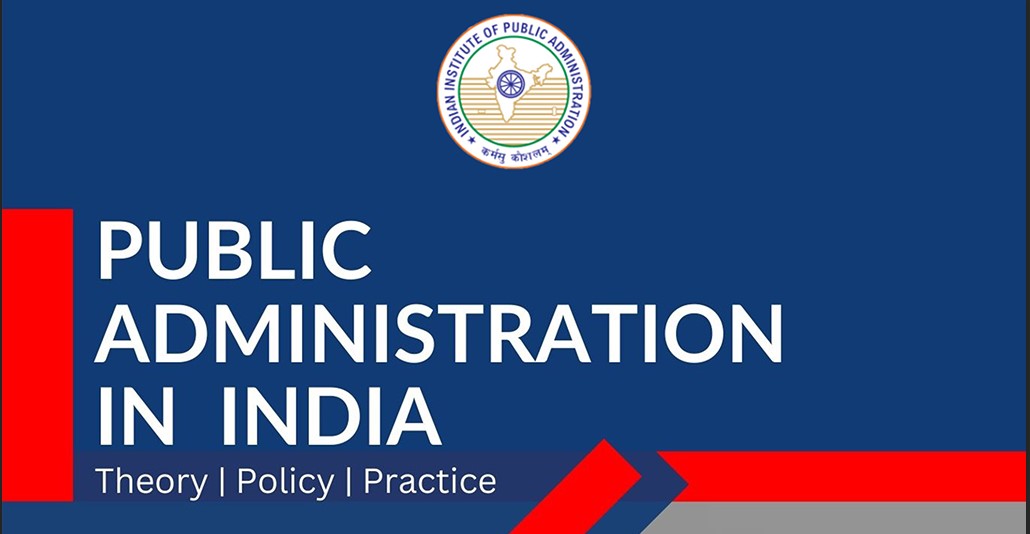Sustainable Agriculture for Ensuring Food Security in Viksit Bharat @ 2047
Abstract
India has the mammoth task of achieving food security with a projected 1.7 billion in 2047. The current paper addresses the role of sustainable agriculture and food systems as catalysts toward achieving this goal. One of the largest food-producing countries in the world, India has worse food security challenges, particularly on climate change, water scarcity, and socio-economic imbalances. Organic farming, crop diversification, and efficient irrigation techniques enhance productivity and resilience, which is underscored by case studies from Sikkim and NMSA, which reflect and emphasize such an understanding of benefits, including increased farmers' incomes, lower negative environmental impacts, and better health for soils, and mainstreaming of these measures is required for the sustainable food system to make it accessible, affordable, and nutritious. These vary from policy strengthening of initiatives like NFSA and PPPs that must target reaching the most vulnerable people in the country. This paper emphasises the need for a multi-pronged approach towards integrating issues of sustainable agriculture with appropriate support policies and stronger food systems that could give the desired assured and sustainable food future for India in 2047.
Keywords: Viksit Bharat, sustainable agriculture, food systems, food security, climate resilience.
1. Introduction
It will be a huge task for India to become an advanced country by 2047 because the number of such an increasing population would be a great challenge. The population of India, in the time when it reaches 2047, is likely to stand around 1.7 billion, and so is the demand for food, thus requiring large increases in the population and tremendous improvement of productivity in agriculture. The scarcity of arable land will become a challenge to food production, along with water scarcity and climate change impacts. More importantly, diversity in farming and nutrients in the food will play a role in overall health and well-being besides caloric intake. At the very doorstep of the mid-2020s, some serious challenges stare India in terms of food security for this massive population.
Even among the largest producers of food in the world, an important section of the Indian population still lags in meeting the need for food. India ranks 105 positions out of 127 nations in the Global Hunger Index (GHI, 2024). The number is more shocking when, according to GHI in 2024, the country ranked at the very top for having an undernourished population total of approximately 194.6 million. Agriculture and food systems in India have multiple challenges: erratic weather patterns, droughts and floods, overexploitation of groundwater and chemical fertilizers, etc. What is more, 82% of Indian agrarian households are small and marginal farmers who face problems such as access to modern agricultural techniques and fragmented landholdings. Once more, surging food prices and slowing economies reduce the ability of most households to afford a suitable diet.
However, sustainable agriculture is linked with better soil health, increased crop resilience, and higher productivity. Apart from these advantages, sustainable food systems reduce greenhouse gas emissions and assist in water conservation. If farmers adopt sustainable agricultural practices, they will benefit in terms of input reduction and profitability, and will be assured of sustainable agriculture with diversified and nutritious food that helps in reducing malnutrition and promoting better health outcomes. This, therefore, is essential to ensuring food security as long as it adopts environmentally friendly, economically viable, and socially responsible practices that have soil health, water, and greenhouse gas emission-reducing impacts and biodiversity-increasing effects. Key strategies and best practices form regenerative practices by using techniques such as conservation tillage, cover cropping, crop rotation, and agroforestry to improve soil fertility and increase crop resilience through sequestration of carbon, followed by Integrated Pest Management (IPM), agroforestry, circular agriculture, and smart water management(FAO, 2024).
2. Literature Review
Food security refers to a state where all people, at all times, have physical and economic access to sufficient, safe, and nutritious food that meets their dietary needs and food preferences for an active and healthy life. Four major dimensions are involved: availability, access, utilization, and stability. The availability of food security can be considered as the supply side of food security and is determined by food production, stock levels, and net trade. Access is the economic and physical accessibility to food to allows households to acquire amounts of food. Utilization focuses on how the body utilizes various nutrients in food, which would be influenced by care practices, food preparation, and dietary diversity, while stability ensures that the other three dimensions are stable over time, protecting against shocks such as economic crises or natural disasters (FAO, 2024).
Undeniably, India has considerably improved food security since its independence. The Green Revolution in the late 1960s shifted India from a food-deficient country to a food-surplus one through the introduction of high-yielding crop varieties. The National Food Security Act (NFSA), enacted in 2013, has provided food entitlements for more than 800 million citizens. There are still some underdeveloped areas. These developments notwithstanding, India has numerous challenges such as population pressure, climate change, and poverty/inequality issues, hitches in agriculture, poor storage facilities, and a worse distribution and transportation infrastructure. Despite such odds, India continues efforts to improve food security through sustainable agricultural practices, water irrigation structures, storage, and transportation(Panda, 2024).
Sustainable agriculture is a farm system that meets the present needs of a food and textile society without degrading the ability of future generations to meet their own needs. This includes three fundamental goals such as environmental health, economic profitability, and social and economic equity. The principles of sustainable agriculture incorporate ecological integrity, conservation of biodiversity, maintenance of soil health, preservation of water resources, efficiency of energy, and provision for social and economic equity. A comparison between sustainable agriculture and conventional agriculture is shown in Table 1.
Table 1: Comparison Between Sustainable Agriculture and Conventional Agriculture
Sources: Adams, 2023; FAO, 2024.
Food systems entail all the aspects and practices associated with producing, processing, distributing, consuming, and disposing of food. These also include the interactions among people, institutions, and processes to be involved in. Components of food systems include production, processing, distribution, consumption, and disposal. The process of production includes practices in crop farming, livestock farming, and fisheries. Processing includes changing raw agro-based products into food products and packaging, and preservation. Distribution refers to the transportation and marketing of food from the producers down to the consumers through wholesale and retail networks. Consumption means acquisition, preparation, and consumption by the household and individual; disposal is characterized by waste management processes related to food, which include recycling and composting (FAO, 2024).
Food systems are needed to assure food security because they address the dimensions, including availability, access, utilization, and stability. Efficient food systems create food supplies through optimal agricultural productivity, reduced losses after harvest. They, thus, influence the economic and physical accessibility of food. Development in infrastructures, especially easy market access and enhancing good trading practices, ensures food supply availability to all sub-groups of the population. Nutritional quality and food safety are two other essential requirements affected by the food systems. Methods of processing and preserving can make food more nutritious and even safer to consume, thereby helping directly with health benefits. Resilient food systems can resist shocks such as those caused by natural disasters or a recession, and pandemics by providing stable and consistent food supplies (FAO, 2024). This literature review has shown the significance of sustainable food systems in ensuring food security by improving the availability, access, utilization, and stability of food resources.
3. Findings and Discussion
India is the world's largest country with 194.6 million undernourished individuals. Ironically, one of the world's biggest food grain producers, the country ranks 105th in the Global Hunger Index (GHI, 2024). About 55.6% of Indians, or 790 million, cannot afford a healthy diet. The cost of a healthy diet in India increased to USD 3.96 per person per day in 2022. Agriculture and food systems in India have been faced with problems such as population pressure, climate change, water scarcity, poverty and inequality, and land degradation (Rathore, 2024; Singh, 2024). However, new trends indicate a mixed prospect. Although there is positive momentum regarding undernourishment in that it has reduced the number of people undernourished from 240 million in 2004-06 to 194.6 million currently. However, food inflation in India was on a roll and it was phenomenal from April 2021 to February 2024. Not only this, the Indian government also took food security into its priority list through the Public Distribution System (PDS) and National Food Security Act (NFSA) 2013. Not to forget sustainable farming, as well. This is organic farming and integrated pest management, which increases productivity and resilience. Thus, the onward journey to food security in India is likely to continue to be full of challenges and opportunities. Nevertheless, the key lies in sustainable practices, healthy technologies, and government efforts to ensure that each person has enough, safe, and nutritious food(Rathore, 2024; Singh, 2024).
Sustainable agriculture has the potential to bring great improvement to food security in India as it promotes practices that are environmentally friendly, economically viable, and socially equitable. With sustainable farming techniques such as crop rotation, organic farming, and agroforestry, the farmer can improve soil health, conserve water, and reduce dependency on chemical inputs. Not only do these practices enhance yield and climate change resilience for crops, but they also ensure continued agricultural ecosystems' productivity and sustainability over time. For example, NMSA across Indian regions has been promoting various sustainable practices, thus further improving food security and enhancing the incomes of farmers(Gupta et al., 2021).
One such case study is that of organic farming in Sikkim, which has turned out to be India's first completely organic state. It has banned chemical fertilizers and pesticides and, therefore, has improved the health of the soil and water, but increased the income of farmers by giving premium prices for organic produce. This has enhanced food security through organic farming, where there is sufficient nutritious food ready to be availed of, while the environment remains protected. The third is rainwater harvesting and Integrated Pest Management(IPM), two techniques adopted in different parts of India. These have helped farmers cope with water scarcity and pest infestations, respectively. All these activities have led to higher yields of crops and reliable food production that ensures overall food security within the region (AG Horizons, 2023). Sustainable agriculture is necessary for enhancing food security within India by promoting environmental health, economic profitability, and social equity, and continues its investment and promotion of sustainable agriculture to ensure India can attain a resilient and secure food system to feed a growing population.
Issues on climate change, population, and socio-economic inequality would be solved by sustainable food systems in India, and thus, the security of food production would be very crucial. According to the Global Hunger Index (2024), India ranked 105 out of 127 countries with a score of 27.3. It is considered one of the most food-insecure places in the world. Crop rotation, organic farming, and conservation might all be sustainable agricultural methods to improve the productivity and resiliency of agriculture. Indian Council of Agricultural Research (ICAR) estimates that as much as 30% of agricultural land in India is degraded because of soil, but with proper soil management, that might be avoided. That is, they enhance soil health, increase yields on crops, and reduce greenhouse gas emissions, which contribute toward food security and environmental sustainability (Dwivedi, 2024).
Some initiatives of the Indian food system have been good enough to improve food security significantly. Throughout all the years, the National Bank for Agriculture and Rural Development (NABARD, 2022) has been working laboriously to promote sustainable and just agriculture through financial as well as non-financial interventions, innovations, and technology. The efforts done here ensured that India saw its record-breaking foodgrain and horticulture production ever, as India had produced 315.72 million tons of foodgrains and 341.63 million tons of horticulture produce in the year 2021-22.
NABARD has also been involved in financial and non-financial measures in collaboration with innovations and technology to promote sustainable and equitable agriculture in India. NABARD schemes are designed to strengthen Indian agriculture against climate-related disasters, offer easy access to credit for small and marginal farmers, and support eco-friendly farming techniques. Some of the major programs taken up by NABARD include the Self-Help Group–Bank Linkage Programme, through which it has been possible to reach millions of rural households for affordable credit and financial services. FPOs and OFPOs have also been supported to ensure that economies of scale reach small farmers and that their access to markets improves (NABARD, 2024).
Figure 1, showing data from 2015 to 2024, reveals that NABARD has been leading the race to ensure sustainable and just agriculture in India. Its multifaceted approach encompasses a combination of both financial and non-financial interventions and the latest innovation and technology. The cornerstone has been the SHG-BLP, which has empowered millions of rural households through the provision of low-cost credit integrated with financial service offerings. Thus, the group has helped enhance the economic strength of small and marginal farmers against various shocks and adverse climate events; thereby, such households can invest in higher farming practices as well as achieve productivity. Some major contributions of NABARD include its initiative to facilitate making Indian agriculture a climate-resilient practice, to encourage climate-resilient agriculture, and other such technologies of better irrigation facilities, high-yield, and high-climate-resistant varieties.
Figure 1: Financial assistance given by NABARD and the annual production of food grains and horticulture from 2015 to 2023 in India.
Source: Annual Reports of NABARD, 2015 to 2024. https://www.nabard.org/financialreport.aspx?cid=505&id=24
Figure 1 depicts the financial assistance extended by NABARD and the annual production of food grains and horticulture from 2015 to 2023. The financial assistance provided by NABARD has risen from ₹50,000 crore in 2015 to ₹90,000 crore in 2023. This increase in funding was meant to support a range of agricultural and rural development initiatives, including infrastructure development, irrigation projects, and sustainable farming practices. During the same period, production of food grains and horticulture also grew steadily. Food grains production rose from 265.1 lakh metric tons (LMT) in 2015 to 349.7 LMT in 2023, and that of horticulture from 28.3 LMT to 34.8 LMT. The growth pattern, therefore, is indicative of the fact that financial assistance from NABARD has added to the increase in agricultural productivity and facilitated growth in the agricultural sector. This infused more funds, which were consequently put towards various schemes and projects to be used in improving irrigation facilities, developing organic farming, and increasing high-yielding crop varieties.
NABARD has tried to focus on Farmer Producer Organizations (FPOs) and Off-Farm Producer Organizations (OFPOs), other than financial assistance. It supported small-scale farmers in aggregating their produce to benefit from economies of scale as well as better market access. Farmers got improved bargaining power, reduced transaction costs, and higher incomes because of the support that NABARD gave to FPOs and OFPOs. This has assisted farmers in taking up sustainable agriculture and made modern agricultural technology available. Through such initiatives, NABARD has promoted not only sustainable agriculture but also supported the overall socioeconomic development of rural communities in India. It has created a sound base for the future of Indian agriculture through a comprehensive strategy based on financial support, technological innovation, and capacity building (NABARD, 2024).
NABARD has been the pioneer in climate-resilient agriculture practices and technologies in India. NABARD has launched various programs for improving the resilience of farming communities against climate change, since agriculture is vulnerable to it. Improvement of irrigation infrastructure is one major focus area because water availability during dry spells is critical, and optimization of water use is also necessary. NABARD has also helped in constructing check dams, drip irrigation systems, and other water conservation measures to reduce the effects of irregular rainfall patterns. The bank has also promoted organic farming as it improves soil health, reduces dependence on chemical inputs, and increases the income of farmers. The support of NABARD has ensured that farmers, in turn, have been able to cope with climate change vagaries by adopting high-yielding crop varieties that are more resistant to the vagaries of climate change and thus ensuring higher yields. All such efforts have enhanced agricultural productivity besides reducing poverty and improving the rural livelihoods in India (NABARD, 2024; Pattanaik et al., 2025).
Watershed development and natural resource management form the second thrust area of NABARD. Watershed development seeks to promote soil and water conservation, the revival of degraded lands, and the restoration of the ecological balance in rural areas. The watershed development has taken hundreds of projects to introduce contour bunding, afforestation, and water harvesting among farmers for sustainable agricultural development. Water availability and supply became more assured for the benefit of agriculture, while fertility in soil also improved with such projects. The other impact of NABARD on natural resource management is efforts in agroforestry since the integration of trees and shrubs into farm systems increases biodiversity, besides augmenting farmers' sources of additional income. The efforts at integration made by NABARD have gone a long way in enhancing the success of sustainable agriculture, reducing degradation of the environment, and better socio-economic conditions in rural communities. Climate-resilient practices, for instance, along with the sustainable management of resources, have helped NABARD in creating an agricultural sector for India that is more resilient and prosperous (NABARD, 2024; Pattanaik et al., 2025).
International Solar Alliance (ISA) is an initiative by India and France to bring clean and renewable sources of energy to developing nations for a pathway towards sustainable agricultural practices and food security. These new initiatives represent collaboration in building stronger food systems that can be resilient against the impacts of climate change and population growth. Renewable energy is going to alter the face of India with respect to encouraging sustainable agriculture. A renewed focus on attaining food security has driven the renewable energy segment to take its pivotal role while ensuring the aspect of guaranteed supply of power within the Indian countryside, which represents the livelihood pattern of a huge majority based upon agriculture. In this scenario, solar energy is indeed a game-changer for farmers in India. This eliminated the dependency of farmers on erratic monsoon rains and unreliable grid electricity and allowed the use of water for irrigation throughout the year. This, of course, came with the resultant increased productivity from agriculture, accompanied by lower risks of crop failure. This also, in turn, reduced the dependency of farmers on diesel-powered pumps, causing savings and reduced emissions of greenhouse gases. Therefore, the farmers will reap more yields and are working toward reducing their footprint on the environment through sustainable and resilient farming as a result of generating solar energy.
Other renewable sources of energy include biogas and wind, which greatly contribute toward the implementation of sustainable agriculture practices in India. Biogas plants convert the waste from agricultural processes and animal manure into clean energy to be used in cooking, lighting, and machinery on the farm. It serves not only as a renewable source of energy but also as an efficient means to dispose of waste while improving the condition of the soil by producing organic fertilizers. In coastal and arid regions, wind power is being generated to power farms and rural industries. This integration helps in augmenting diversification about energy sources, which helps in building resistance to farming from energy prices as well as supply disruptions. Thus, agriculture in India becomes less vulnerable to a rise in energy price; rather, it becomes energy efficient and eco-friendly, thereby giving the path toward food security that lasts for ages with renewable energy technologies (Bathaei&Štreimikienė, 2023).
Renewable energy has another second benefit that can further improve food security through value-addition promotion and prevention of post-harvest losses. Cold stores powered by solar and wind can preserve perishable products through shelf life extension and the prevention of spoilage. This is an important factor crucial to small-scale farmers who are normally restrained by a lack of access to hard infrastructural facilities. Renewable energy can, therefore, be used for agro-processing units too, as it enables the producers to add more value and produce to earn returns. The most immediate example that surfaces is the drying of grains, fruits, or vegetables using solar dryers and mills before transportation, so that it would be cheaper for them to reach the respective markets. Integrating renewable energy in the agricultural value chain enhances both the sustainability of agriculture and the generality of resilience and profitability in the agricultural sector; hence, this has been a major contributor to food security and rural development (NABARD, 2022).
In supporting the demands of food security with growth in population, climate change, and socio-economic inequalities, sustainable food systems can help India. Sustainable agriculture practices and food system projects supporting and encouraging them can help India increase productivity for agriculture, ensure soil health, and reduce greenhouse gas emissions. Such measures would include more resilient, equitable, and sustainable food systems that would ensure that everyone gets adequate, safe, and nutritious food. In this regard, India needs to look at solutions that focus on both human well-being and environmental health in the pursuit of finding a solution to food security problems.
4. Conclusion
Hence, the current study underlines sustainable agriculture and food systems crucial for ensuring food security in India. Even though it is a food-surplus country, there are still several large challenges in the form of climate change, water scarcity, and socio-economic imbalances that keep delaying the attainment of food security for many people. This study, therefore, suggests the sustainability of agricultural practices, such as organic farming, crop diversification, and water-efficient irrigation methods that can enhance agricultural productivity and resilience. The case studies in the Sikkim region and the NMSA project illustrate how such practices increase the income of farmers, reduce adverse effects on the environment, and enhance soil health. Mainstreaming sustainable food systems for accessibility, affordability, and nutritional quality is key to making food security a success story. NFSA, with the PPPs, carries positive momentum in this regard, but needs more policy reform for better implementation toward reaching the most vulnerable segments of society. Ultimately, the study affirms that achieving long-term food security and resilience in India will involve a holistic approach combining sustainable agricultural practices, supportive policies, and robust food systems. This would mean an India that ensures, with Viksit Bharat, a food future which is secure and sustainable by the end of 2047.
References
1. Adams, Claudia. (2023). What are the principles of sustainable agriculture? https://www.agriculturelore.com/what-are-the-principles-of-sustainable-agriculture/.
2. AG Horizons. (2023). Analysis Report on Sustainable Agriculture in India. https://aggrp.in/wp-content/uploads/2023/08/Analysis-Report-On-Sustainable-Agriculture-in-India-July-2023.pdf.
3. Bathaei, A., &Štreimikienė, D. (2023). Renewable Energy and Sustainable Agriculture: Review of Indicators. Sustainability. 15(19): 14307. https://doi.org/10.3390/su151914307.
4. Dwivedi, Shivam. (2024). Reimagining Food Security in India: Building Resilient Food Systems for a Sustainable Future.
https://krishijagran.com/blog/reimagining-food-security-in-india-building-resilient-food-systems-for-a-sustainable-future/.
5. FAO (Food and Agriculture Organization). (2024). Sustainable food systems: Concept and Framework.https://openknowledge.fao.org/server/api/core/bitstreams/b620989c-407b-4caf-a152-f790f55fec71/content.
6. GHI (Global Hunger Index). (2024). India. https://www.globalhungerindex.org/india.html.
7. Gupta, N.; Pradhan, S.; Jain, A.; and Patel, N. (2021). Sustainable Agriculture in India: What We Know and How to Scale Up. New Delhi: Council on Energy, Environment, and Water. https://www.ceew.in/publications/sustainable-agriculture-india.
8. NABARD (National Bank for Agriculture and Rural Development). (2022). Food and Nutrition Security in India: Charting the Way to a Robust Agro-Food System.https://www.nabard.org/Hindi/auth/writereaddata/tender/2501230128nrs-35-food-and-nutritional-security-in-india.pdf.
9. NABARD (National Bank for Agriculture and Rural Development). (2024). Annual Report, 2023-2024. https://www.nabard.org/pdf/2024/version-final.pdf.
10. Panda, M. (2024). Evolution of India’s Policy Response to Hunger, Nutrition, and Food Security Since Independence. In: Dev, S.M., Ganesh-Kumar, A., Pandey, V.L. (eds).Achieving Zero Hunger in India. Springer, Singapore. https://doi.org/10.1007/978-981-99-4413-2_2.
11. Pattanaik, S.; Rajdeep, S.R.; and Dogra, B. (2025). Enhancing Resilience of Indian Agriculture to Climate Shocks: The Way Ahead.
https://www.nabard.org/auth/writereaddata/tender/pub_2101250450271351.pdf.
12. Rathore, Manya. (2024). Food security in India – statistics and facts. https://www.statista.com/topics/7824/food-security-in-india/.
13. Singh, Shivam. (2024). Food Security in India: Policies, Challenges, Frameworks, and Solutions. India Farm. https://www.indiafarm.org/gov-of-india/laws-regulations/food-security-india/.
Leave a comment
More articles from Governance & Polity




